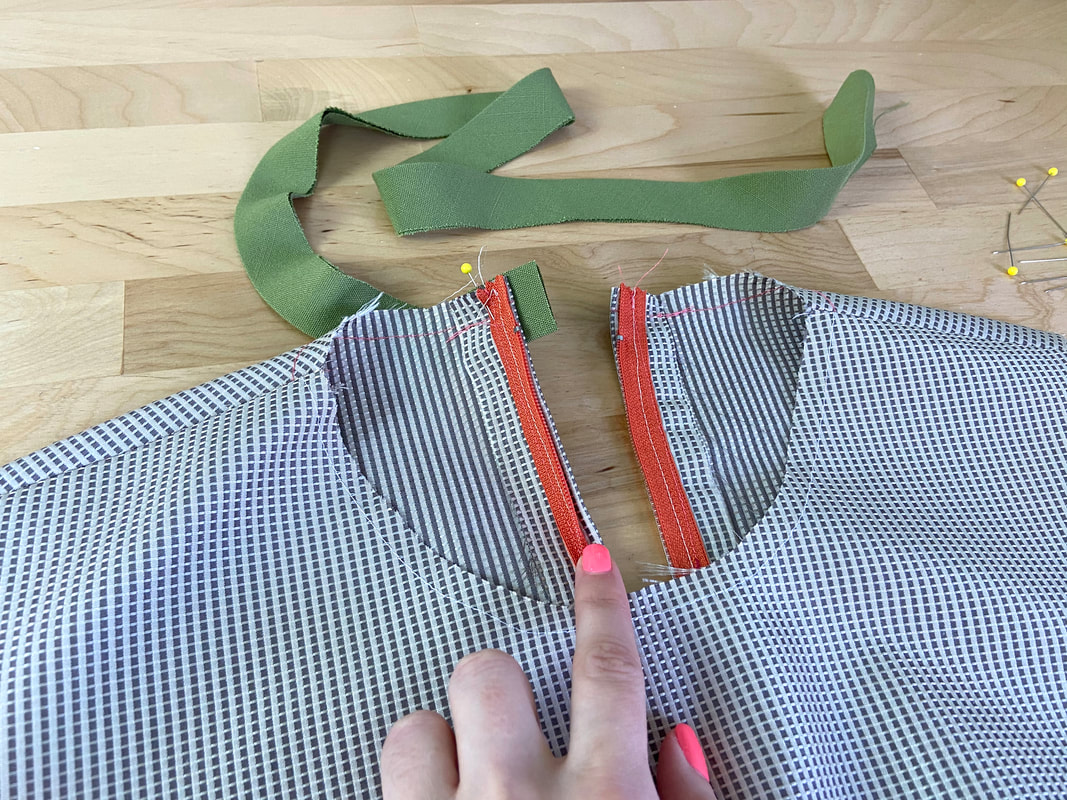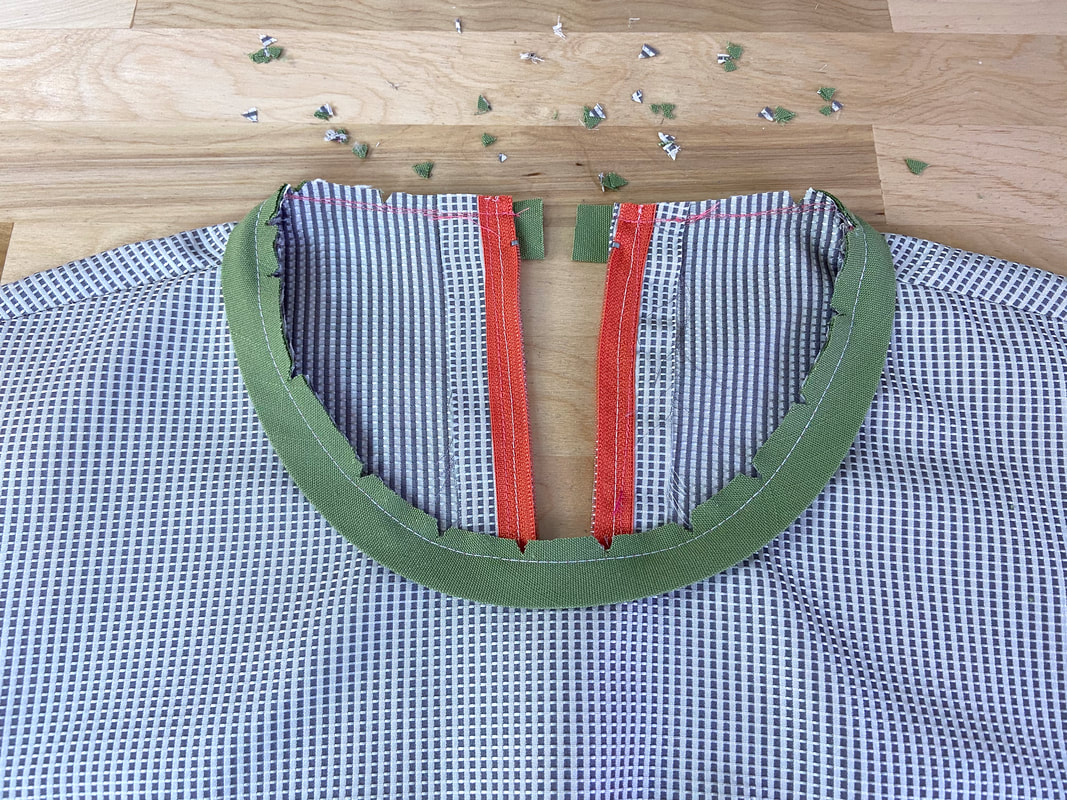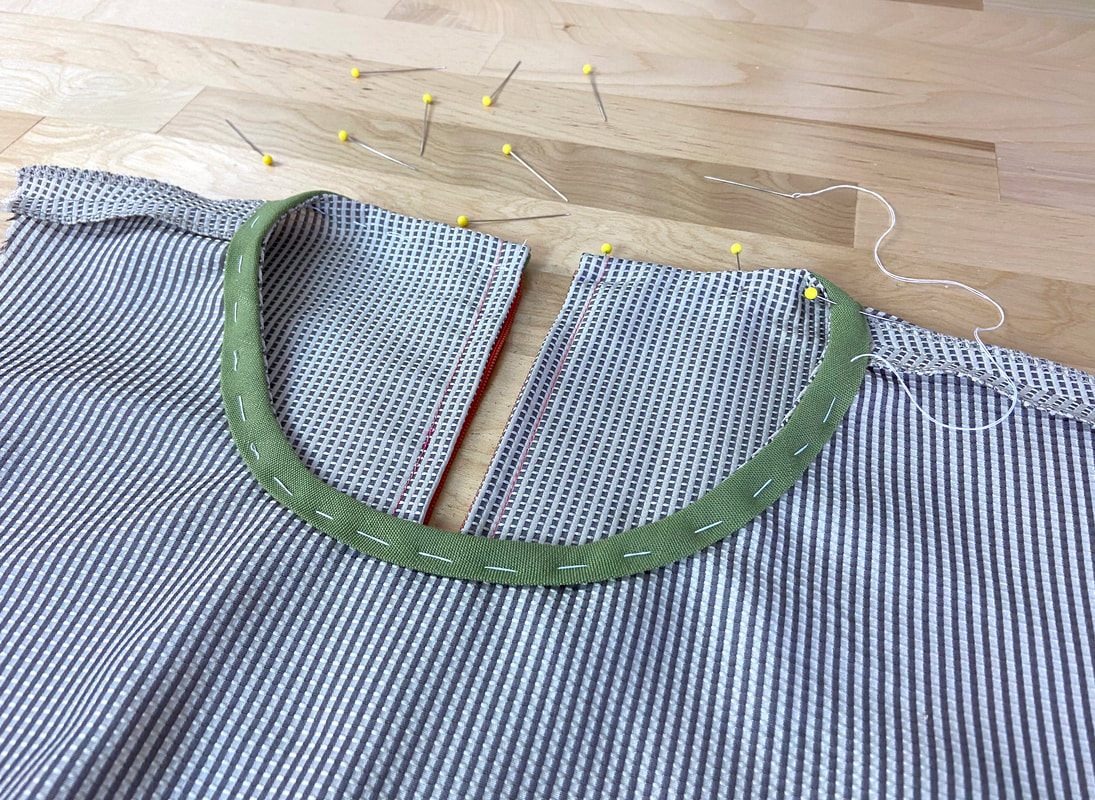How To Sew A Bias Strip Curved Neck Facing
A bias faced neck finish uses a bias fabric strip to clean finish the neckline's raw edge similar to a regular shaped facing.
Start by measuring and cutting the bias fabric strip. This strip should be double the width of the finished facing plus two seam allowances matching the neck edge seam allowance. In this example, the initial bias strip is cut at 2" wide.
1. Fold the fabric strip down the center with wrong sides touching, and iron the folded binding to crease it in this position.
2. If your neckline edge has a zipper opening, leave about 1/2" excess at one of the bias facing ends, and align the strip's raw edges to the neckline edge with fabric face sides touching. From the garment's right side, insert a pin perpendicular to the edges through all layers of the bias facing and garment.
3. Working on the garment's right side, continue aligning and pinning the bias strip facing to the entire curved edge. The pins should be inserted perpendicular to the edges. Given that the fabric strip is cut on the bias, the facing is flexible enough to easily mold along the curved neck edge.
4. Leave another 1/2" excess at the zipper closure and trim the rest of the bias facing off.
If you do not quite feel comfortable stitching curved edges, it is helpful to replace the pins with a hand basting stitch. The hand basting will keep all layers securely aligned and prevent them from shifting out of place during the machine stitching process.
5. Machine stitch the bias facing to the neck edge at the designated seam allowance- 1/2" in this tutorial.
6. To minimize bulk in the finished application, trim the seam allowance halfway down.
7. Next, clip wedge (triangle-shaped) notches into the curved seam allowance layers as shown above. These notches eliminate tension and ensure a smooth, well-defined curved edge when the bias facing is turned to the inside of the garment.
8. Flip the bias facing to the inside of the garment and iron the resulting clean-finished edge. Insert pins perpendicular to the neckline edge to keep all layers aligned in this position. To keep the bias facing perfectly aligned in the steps to follow, it helps to use a hand basting stitch in lieu of pins, especially if you are a sewing beginner. The hand basting will also provide a lot more comfort and stability during the hand stitching process below.
Note: Fold and slipstitch the binding ends inward at each zipper opening portion to fully enclose the bias facing's raw edges.
Note: Fold and slipstitch the binding ends inward at each zipper opening portion to fully enclose the bias facing's raw edges.
9. To fully seal the facing layers, slipstitch the folded facing edge to the wrong side of the garment surface underneath. Catch only 1-2 threads from the garment's surface as this will ensure no visible stitching on the garment's right side.
The completed bias faced neckline should be smooth and tension-free with the facing laying flat against the garment layer.












